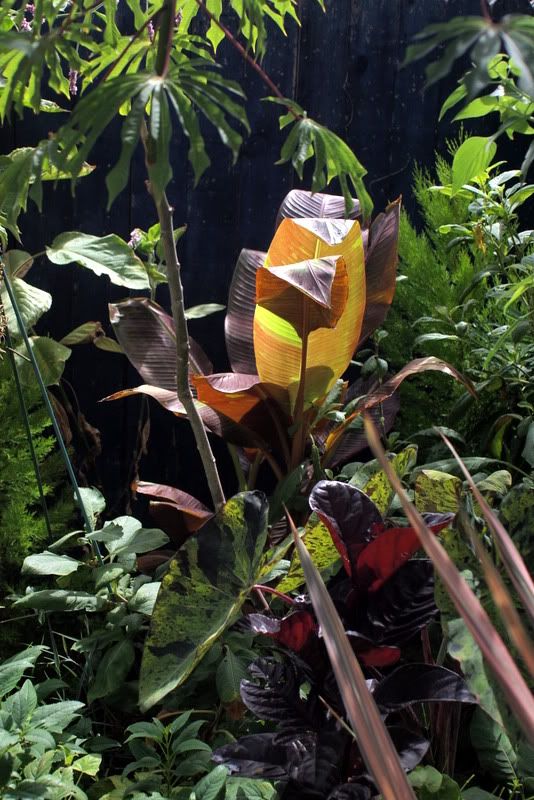
Of Ensete, Musa, and Musella, the three genera of bananas, I’ve grown just one. Above is Musa ‘Siam Ruby’ in more plentiful irrigation times in my garden around 2010 — just like the Dude’s rug, those big leaves really pull a garden together. Though I’ve only grown ornamental bananas, theoretically I could grow the edible kinds in my zone 10 frost-free garden, too, as my Vietnamese neighbor does, Mr. Le. We sampled one of his wonderfully plump, sweet, stubby bananas when it cropped in November, last month, definitely not a ‘Cavendish.’ Bananas are one of the most widely consumed fruits in the world and the No. 4 dietary staple after rice, wheat, and corn. If you’re cooking them, then they’re called plantains.

But unless you have a zone 10 neighbor growing bananas as a seasonally fresh, garden-to-table fruit, your daily breakfast-cereal-with-banana ritual is in jeopardy. Predictably, the monoculture of the ‘Cavendish’ banana, “which a nineteenth-century British explorer happened upon in a household garden in southern China,” (New Yorker “We Have No Bananas“) is producing the same fate as that which befell the previous top banana, ‘Gros Michel,’ last grown in the 1950s. Monocultures never end well; exhibit 1, Ireland’s Great Potato Famine. Vegetative clones have no means to adapt to diseases and pests — when disease kills one, it’s effectively killed them all. It’s just a matter of time. While the ‘Cavendish’ was never the most tasty banana around, it became the number one export banana due to its amenability to shipping and the use of ethylene gas to control ripening. (My dad told us blood-curdling stories of the epic banana spiders he encountered when unloading the fruit from cargo holds in LA Harbor, San Pedro, Calif, just a few miles away.) It’s taken over half a century, but the seedless, sterile, vegetatively propagated Musa acuminata ‘Cavendish,’ once impervious to the deadly fusarium wilt known as Panama Disease that wiped out ‘Gros Michel,’ is succumbing to a potent mutation, Tropical Race 4. TR4 has already infected banana plantations in Asia and Australia but has not yet made a beachhead in Central America, home to the OG neocolonial “banana republics” of the United Fruit Company But that day is inevitable. I don’t know about you, but this is bad news in our house. I doubt Marty would get out of bed if there weren’t bananas in the house.
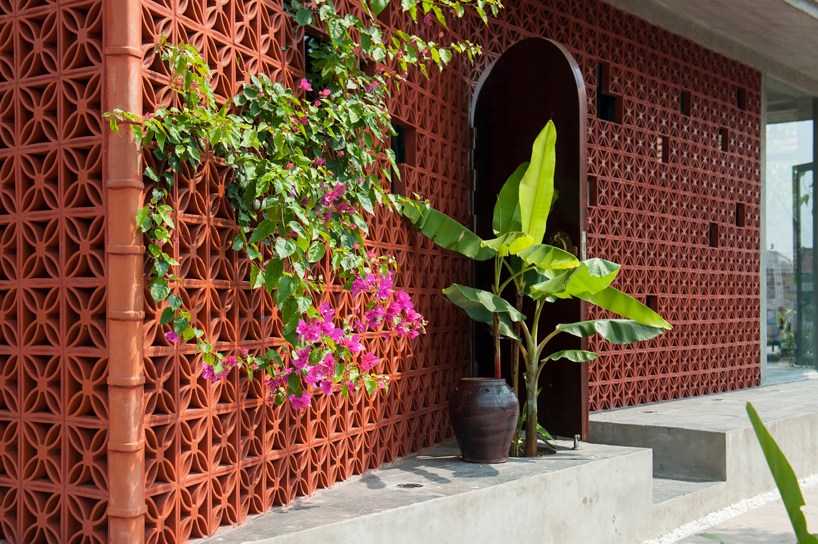
I love the use of breezeway block on this Vietnamese house featured by Design Boom. But it’s the inside walls imprinted with banana leaves that started me thinking about our long-standing love affair with bananas and what we’ll do if/when the ‘Cavendish’ fails.
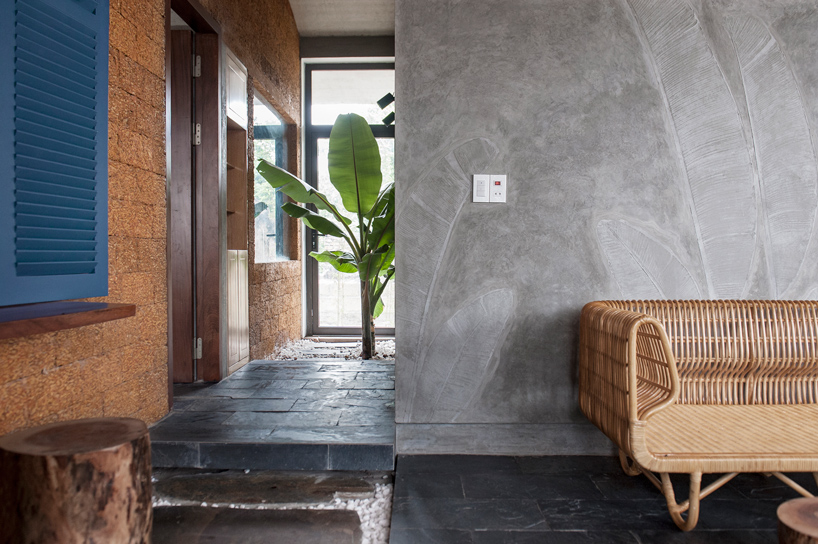
Bananas are understandably revered here — it’s thought that they have been cultivated in the Mekong Delta for over 10,000 years. Viet Nam exports around 1.4 million tons of bananas annually.
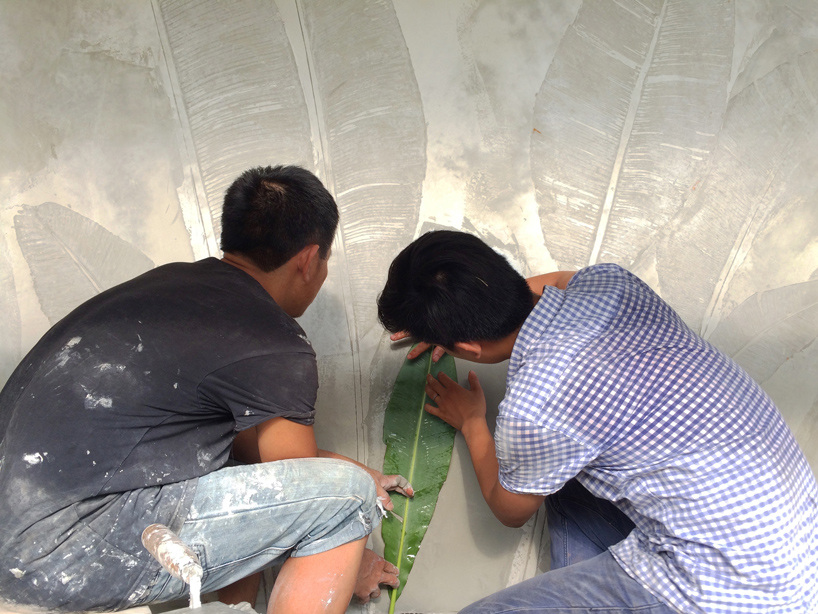
Even though it can grow to tree-like proportions, the banana is an herbaceous perennial, one of the largest. Mr. Le’s plant is easily 15 feet tall.
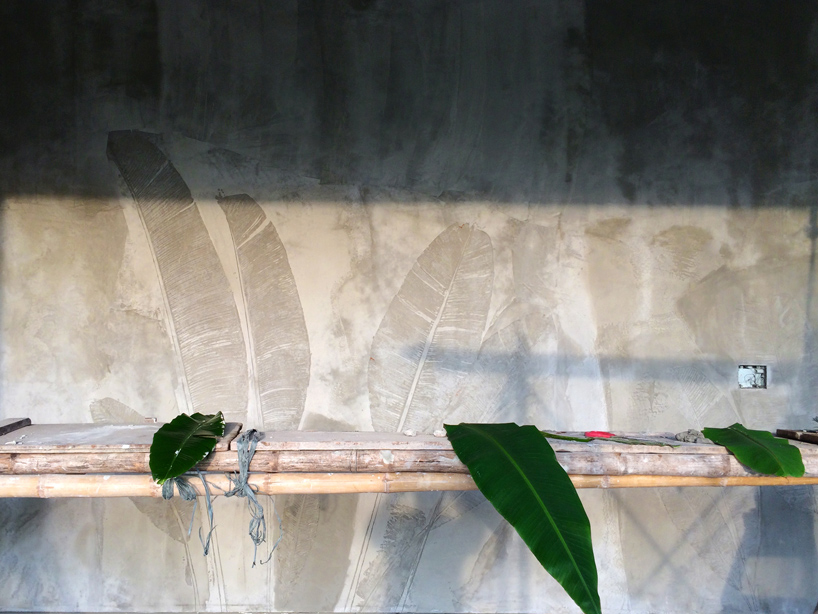
I wish I knew the variety of banana that Mr. Le grows next-door. It really has a much better flavor than the ‘Cavendish.’ Of the millions of tons of bananas produced every year, just 20 percent are exported. The rest are eaten locally. But the huge export market of the commercially produced ‘Cavendish’ variety is so interwoven into so many countries’ economies and such a big part of so many breakfast tables, that its demise is unthinkable. Unthinkable but, apparently, inevitable.
(See also: Bananas: Their History, Cultivation and Production); Garden Riots “The Banana Industry and Panama Disease, the Ongoing Devastation Caused by Fusarium Wilt, Tropical Race 4”)

My husband may not be quite as dependent on bananas as Marty but they’re definitely a mainstay of his diet. I guess I need to shop around for a fruiting banana plant – or 2. And then we need Mother Nature’s assistance with improved water delivery…
Beautifully written. Truly, I don’t know how you manage it. A neighbor two doors down had her Musa Siam Ruby bloom last year–incredible sight.
Lucky you to have a generous neighbor with special bananas so close at hand! Until I was in my thirties, I thought I didn’t care for bananas *at all*. Cavendish are still unpalatable to me, but in El Salvador I was won over by fried plantains with cultured cream and black beans — an outstanding breakfast/brunch, available in many places in the U.S. now, and easy to make at home.
During a later stay, incredibly tasty small red-skinned bananas made me a convert to the fresh fruit as well. On rare occasions those were available in L.A. supermarkets, and they may be seasonally on offer in produce/farmers markets where they’re growable. (Those were a Central American variety, but I bet there’s a similar Vietnamese type.) They don’t keep at all well, but are so small that it’s easy to consume a bunch before it gets overripe.
It must be very hard to grow up with all kinds and multiple varieties of tropical fruit, and then live in a place where they can’t be bought or grown. I’m reminded of this in summer when the brave little hardy banana in the front yard across the road puts on its annual growth spurt; our neighbor is from the Yucatan. Nothing else in this Appalachian landscape even faintly evokes home for him, so I’m hoping all the moisture the clay soil has taken in this fall and winter will enable it to grow lush next season and push past its usual four feet.
Those banana-imprinted walls: SO gorgeous, so simple, so appropriate. Wow. Thanks.
@Kris, I read that bananas like 80 to 200 inches of rainfall a year!
@Jeremy, so nice of you to say! I manage it by pretending I’m talking to people I like and respect — like you!
@Nell, you really get around! The fried plantains, black beans & cream sounds delish. Might have to try that. Thanks as always for your thoughtful comments.
Excellent platanos con crema will be particularly easy to find in your metro area! I did live in an awful lot of places in the eighties to early nineties — (over)compensating now by having not even left the county more than once a year in the last decade…
Thanks again for weaving together handsome banana imagery and the sobering situation with the Cavendish crisis. That Garden Riot post has stuck with me since it first appeared.